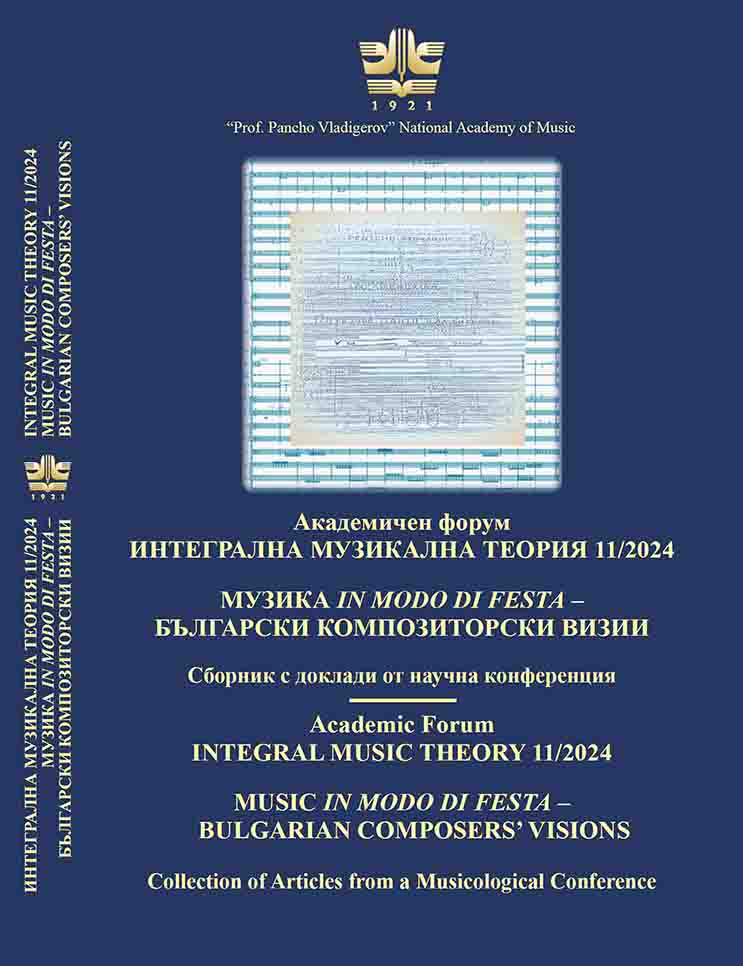Празничното музикално произведение и неговият топос
The Festive Musical Artwork and its Topos
Author(s): Harry RangelovSubject(s): Philosophy, Fine Arts / Performing Arts, Music, Aesthetics
Published by: Издателство НМА „Проф. Панчо Владигеров”
Keywords: topos; occasion; festivity; festive musical artwork; concert-festive musical artwork
Summary/Abstract: This paper highlights the musicological (and practical) problem of the essential difference between a festive musical artwork and a concert-festive musical artwork. The former has a festive occasion and a topos (understood as a particular place and time defined by the meaning of a particular festival) where I am bodily present, while the latter has no festive occasion and its topos is the concert hall where I am bodily “absent”. As a performer, listener and involved in the concert musical artwork as a whole, I find myself left without a particular bodily situatedness which, in turn, is an indispensable aspect of the event-festival and in this sense guarantees it. This means that in the concert-festive musical artwork the body has to be situated in a music that is outside the festive topos which cannot be achieved. The consequence is that the festive musical meaning is altered and no longer determined by the particular festival but by something else. Accordingly, the way in which the musical meaning itself is bodily perceived needs to be reconsidered. To highlight the problem, the paper examines Dimitar Nenov's Christmas by means of phenomenological analysis and describes how this artwork is initially devoid of festivity, occasion and topos: it is composed outside the lifeworld of the particular festive topos. As a counterbalance to Nenov's oratorio is Johann Sebastian Bach's Weihnachtsoratorium, an example of an artwork with a concrete festival, occasion and topos, where the musician is bodily present in a concrete, particular and definite way, namely, in a festive and eventful way. Here the festive musical sense is preserved (provided by a lived, festive world with a specific time and place). The implication of the analysis is that to such a concert-festive music must be found another “festival”, another occasion and another toposic corporeality from which one could sense it as whole.
Journal: Academic Forum “Integral Music Theory”
- Issue Year: 11/2024
- Issue No: 1
- Page Range: 228-247
- Page Count: 20
- Language: Bulgarian

